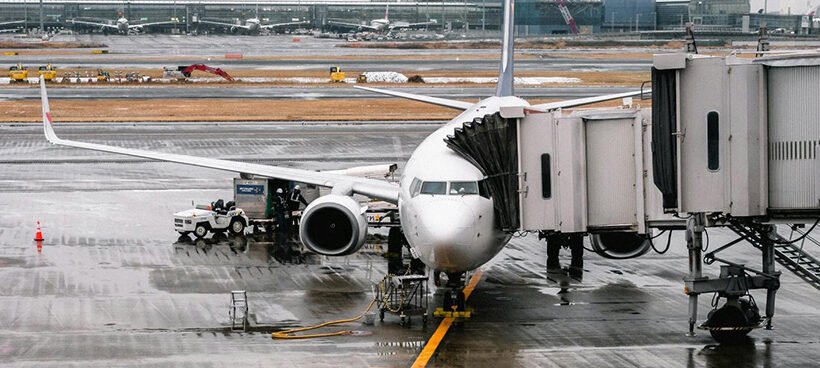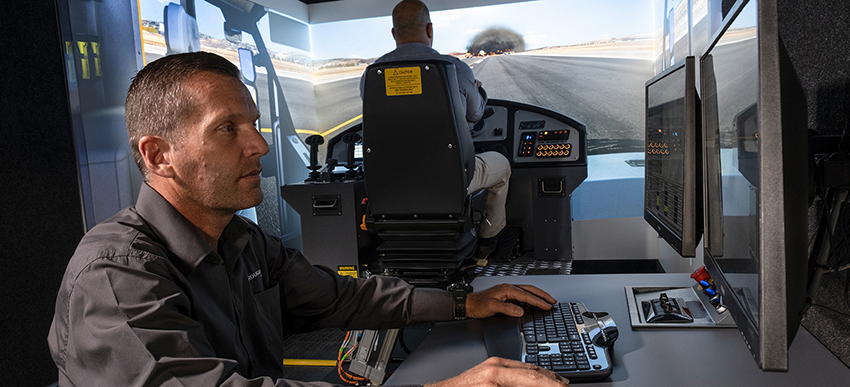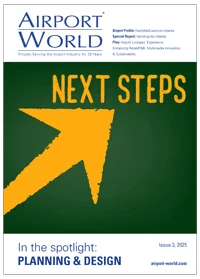Airfield safety
Share

We shine the spotlight on three initiatives that show how airports are enhancing safety and efficiency across the airfield.
Enhancing the performance of existing infrastructure is often key to the growth of the world’s airports, and the airfield, where safety and operational efficiency are paramount, is no exception.
Like all key infrastructure, aprons, taxiways and runways need to be maintained and renovated or upgraded over time to ensure that they are fit for purpose and capable of meeting rising demand.
New technology, particularly in terms of airfield safety lighting, Foreign Object Detection (FOD), autonomous vehicles, and guiding aircraft to and from terminal buildings continues to advance.
As does the capabilities of the emergency rescue vehicles used by airports and equipment such as weather and avian radar.
Below we highlight three projects that have enhanced airfield safety at Costa Rica’s Juan Santamaría International Airport (SJO), Dallas Fort Worth (DFW) in the US, and Leeds Bradford Airport (LBA) in the United Kingdom.
Automated airfield safety solution for Juan Santamaría Airport
Juan Santamaría International Airport (SJO), Costa Rica’s most active gateway and the second-busiest airport in Central America, has traditionally suffered from a number of runway safety challenges owing to the local tropical climate, writes Vaisala’s Jarmo Pilli.
During Costa Rica’s rainy season, high humidity lowers visibility to just 100-metres and poses potentially risky flight conditions or shuts them down altogether. Therefore, safe landings and take-offs require precise visibility readings.
Historically, Costa Rica’s airports have used human observers to measure runway visual range (RVR). However, the human observer method is susceptible to inaccuracies and inefficiencies and proved increasingly unreliable under the COVID-19 pandemic-induced staff shortages.
Indeed, these shortages underscored the necessity of replacing human observation with an automated system that could offer real-time and reliable data.
As an answer, Costa Rica’s civil aviation authority installed an automated Vaisala LT31 RVR system at SJO. It chose this system for its high accuracy, low maintenance and dependability – important characteristics to operate in Costa Rica’s constantly changing rainy season weather conditions.
In contrast to traditional human-measured readings, Vaisala’s system provides uninterrupted, real-time visibility reports to assist air traffic controllers and pilots in making prompt and informed decisions.
Since its implementation, the Vaisala solution has greatly enhanced safety and operational efficiency at SJO.
Constant visibility measurement by LT31 helps decision-makers maintain runway operations under poor weather, minimising flight diversions and delays. Shifting busy flights to better-visibility morning slots instead of busy low-visibility afternoons minimises delays around SJO and improves the air travel experience.
Additionally, Vaisala’s technical team training reinforces the system’s performance in the long-term.
Consequently, the airport is now able to respond more quickly to evolving weather patterns, hence contributing to more efficient and safer air transport in Costa Rica’s critical tourism-driven economy.

Airside training goes high-tech at DFW
Dallas Fort Worth International Airport (DFW) has partnered with ThoroughTec Simulation, a specialist simulation, training and workforce development company, to modernise its ARFF and airside operations training capabilities.
The Texas gateway believes that its investment in advanced training technology underscores its commitment to maintaining its status as a global leader in airport operations training.
The heart of this transformation will be eight high-fidelity, full-mission, motion-base simulators, including ARFF, Rapid Intervention, pumper truck, snow removal, aircraft tug and general airside driving modules.
All these simulators will operate in a 3D digital twin of DFW’s airport and surrounds. This ‘virtual airport’ will enable operators to familiarise themselves with the airport layout and procedures before entering any live airside operations.
Additionally, a virtual, off-road driving track will be supplied, allowing trainee drivers to hone their skills in challenging off-road scenarios.
Combatting airfield subsidence
Airports face persistent challenges with ground stability. Issues like subsidence, water ingress, and heavy traffic can lead to movements of up to 75mm in Pavement Quality Concrete (PQC) slabs in high-use areas like taxiways, aprons, and slot drains, writes Geobear’s Richard Holmes.
This can cause cracking and misalignment, creating safety and operational risks that demand urgent repairs.
Subsidence, caused by voids or weakened ground beneath PQC slabs, destabilises these critical areas. Water ingress worsens the situation by softening the ground beneath, further accelerating instability and the risk of slab failure.
Heavy traffic from aircraft and service vehicles compounds the issue by creating a ‘pumping’ effect, forcing water and soil particles up onto the pavement surface through unsealed or failing pavement joints.
This creates a three-fold issue: destabilising the ground resulting in rocking slabs, increasing the likelihood of step misalignments, and contaminates the pavement surface with soil slurry.
Prompt, effective ground improvement is crucial but conventional techniques, like full slab replacement, are slow, invasive, and less sustainable.
For example, apron repairs for a 40 square metre area can take up to three shifts to complete, followed by a 24 hour curing period to achieve the required load-bearing strength. This limits airports’ operational capacity and puts critical infrastructure out of action.
Geobear’s geopolymer solution offers a faster, less invasive alternative. Technicians drill small holes and inject the material beneath PQC slabs and terminal floors. The material fills voids, binds soils to stabilise ground, and works to lift and realign pavements quickly and with no curing time.
A successful application of this solution took place at Leeds Bradford Airport in UK, where voiding beneath PQC slabs caused pavement instability. Our team developed a bespoke engineering plan for the site, treating 13 slabs on the airfield over four nightshifts, with a curing time of 20 minutes per slab.
This quick turnaround allowed the runway to return to service in time for the next operating day, unlike traditional concrete repairs which would have required a week to reach load-bearing capacity.
And the solution is projected to save Leeds Bradford Airport over £1 million maintenance costs over ten years for a typical 50-slab area.
Additionally, in line with the aviation industry’s focus on sustainability, geopolymer injection can reduce carbon emissions by 62% compared to traditional approaches like full slab replacement, as verified by Carbon Footprint Ltd.
In an industry where unplanned downtime can cost millions, addressing ground instability is essential.







